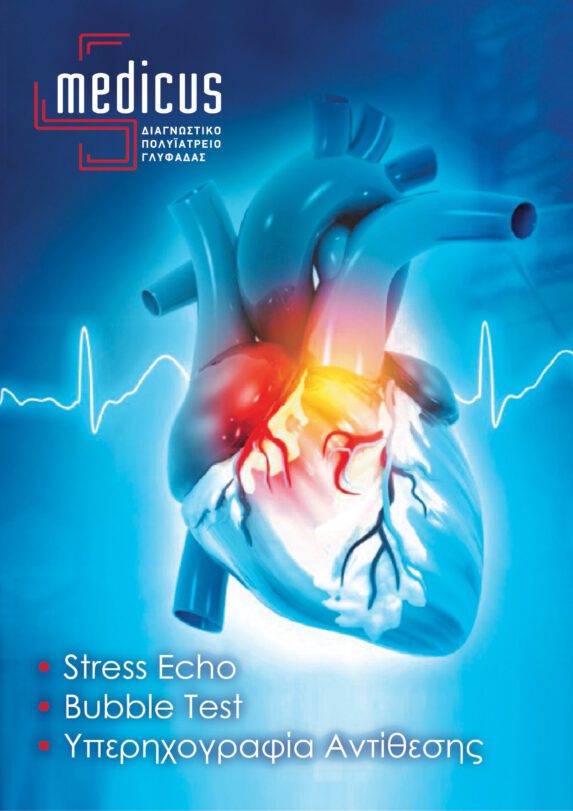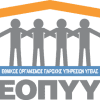Telephone: 210 890 0909
Email: info@medicus-center.com
Dynamic Echocardiography (Stress Echo) is the most modern and safest method for early and reliable diagnosis of coronary artery disease. Stress echo is performed in a dedicated Center by an experienced and certified cardiologist specializing in Dynamic Echocardiography.

The main indications for using this method are:
1. Investigation of coronary artery disease in patients who report symptoms with episodes of precordial pain or shortness of breath.
2. Detection of coronary artery disease in asymptomatic patients who, however, present with many cardiovascular risk factors.
3. Assessment of patients who have undergone coronary angioplasty with stents or surgical coronary bypass.
The pharmaceutical test is the most widespread and reliable method in more than 80% of cases worldwide.
A venous catheter is placed initially for drug administration. A pressure gauge is then placed on the arm to measure blood pressure. This is connected to a monitor to track the electrocardiogram throughout the examination. Dobutamine is administered following a specific international protocol in 4 3-minute stages and a simple contrast agent is administered during the various stages of the examination. Note that this contrast agent has nothing to do with the corresponding substances used in CT or MRI.
The examination takes about 12 minutes. The preparation before the examination and the follow-up after take 45-60 minutes in total, or even longer if the examination shows positive results for myocardial ischemia. After the examination, the patient may leave the laboratory, drive, and engage fully in their normal and social activities.
The popular stress test on a treadmill is not considered a method of first choice. In addition, groups of patients who suffer from shortness of breath, poor physical condition, respiratory or orthopedic problems, as well as several elderly patients, cannot undergo stress tests.
Another reliable method is Cardiac Scintigraphy. However, the patient is given a radioactive drug intravenously along with a large dose of radiation, which, depending on the age of the machine, may be equivalent to hundreds of chest X-rays. After the examination, the patient should avoid contact with young children or pregnant women for 24-48 hours. A disadvantage of this examination is its duration. Along with the preparation and monitoring time, the examination takes a total of 3-4 hours.




